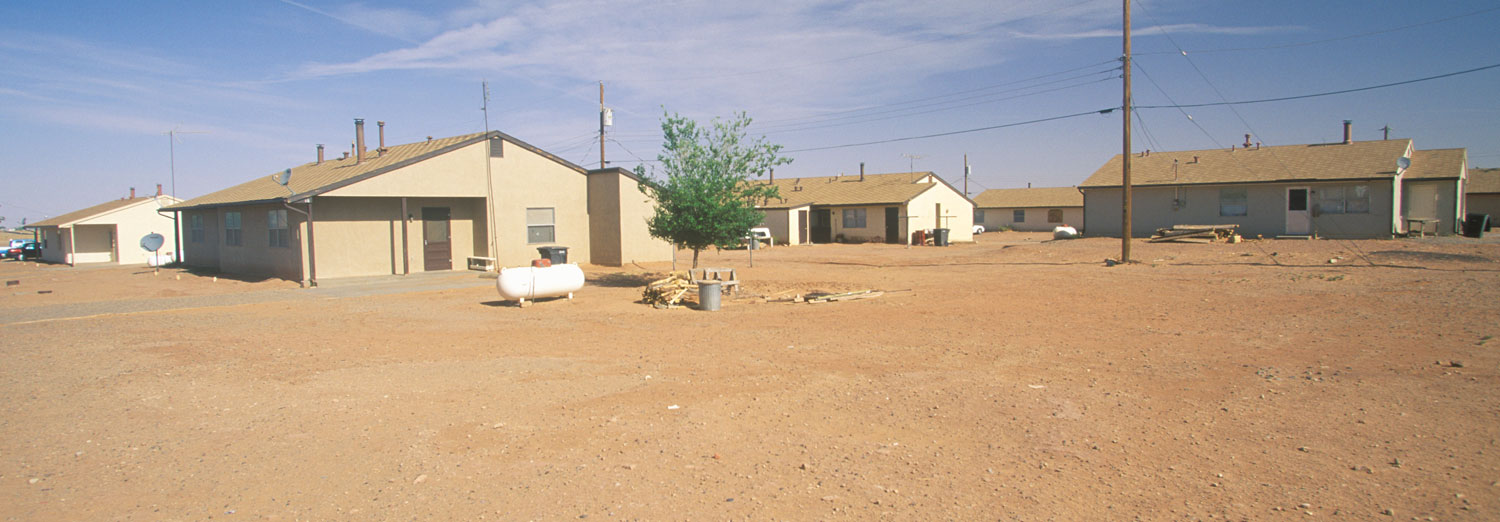
<p>A housing project on Navajo Indian Reservation in Shiprock, NM. Photo by Visions of America/UIG via Getty Images.</p>
Although affordability is often viewed as the biggest barrier to stable housing, in tribal areas, physical housing problems are more severe.

Physical housing problems have declined enough to be negligible across the country, but not for American Indians and Alaska Natives (AIAN) in tribal areas. In a recent study, we found that 10 percent of AIAN tribal area households had plumbing or kitchen deficiencies compared with only 3 percent for the United States on average, and 13 percent of these households had other heating or electrical deficiencies compared with only 2 percent for the United States on average. Overall, 34 percent had at least one problem with physical facilities, condition, or overcrowding, compared with only 7 percent of US households.
Our study also found that homelessness exacerbates overcrowding in tribal areas. The culture in Indian Country supports taking in family members and others who have no other place to stay, rather than letting them live homeless on the streets.
Meanwhile, affordability was less of an issue for AIAN tribal area households. Cost burden, when a household pays more than 30 percent of its income for housing, was the sole housing problem for only 23 percent of AIAN tribal area households, compared with 33 percent for US households on average.
American Indian and Alaska Native tribal area housing problems vary by region. The share of AIAN households in tribal areas with plumbing or kitchen deficiencies or overcrowding was highest in Alaska (36 percent), followed by the Arizona/New Mexico region (31 percent) and the Plains region (15 percent). These three regions accounted for 44 percent of all AIAN households in tribal areas, but accounted for 73 percent of those with physical problems.
In contrast, only 4 percent of households in tribal areas in the Oklahoma region and 6 percent in the Eastern region experienced those physical problems. The three regions with the most serious problems were also some of the regions with a large number of low-income households in tribal areas: 65 percent in the Plains, 62 percent in Arizona/New Mexico, and 59 percent in Alaska.

Although progress has been made in rehabilitating the current housing stock and building new housing under the US Department of Housing and Urban Development’s Indian Housing Block Grant program, the contrast between AIAN housing on tribal lands and average housing conditions remains stark. Tribal capacity to manage federal housing funds and to leverage other funding sources has grown in the past 20 years, but strong partnerships, technical assistance, and increased funding are needed to close the gap.
Let’s build a future where everyone, everywhere has the opportunity and power to thrive
Urban is more determined than ever to partner with changemakers to unlock opportunities that give people across the country a fair shot at reaching their fullest potential. Invest in Urban to power this type of work.